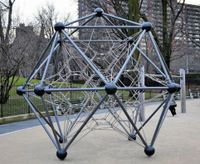Fascial Distorsion Model
Suffering from pain in your musculoskeletal system, limited mobility, or other physical ailments?
Have you already tried various therapies without the desired success?
Then the Fascial Distortion Model (FDM) could be a promising solution for you.
FDM is a diagnostic and treatment concept based on the idea that most pain and functional disorders in the musculoskeletal system are caused by specific deformations or "distortions" of the fascia. Fascia are connective tissue structures that run through our entire body—from muscles and organs to nerves and blood vessels. They envelop and connect everything and play a crucial role in our mobility, strength, and well-being.
Broad Application Spectrum: FDM can be successfully used for a wide range of musculoskeletal complaints, including back pain, neck and shoulder pain, joint pain (e.g., knees, hips, ankles), sports injuries, migraines, or dizziness.
Efficiency: The targeted techniques allow for effective therapy in a relatively short amount of time, which can save you time and money.
Causal, Not Symptomatic: While many therapies alleviate symptoms, FDM aims to address the actual cause of your complaints, which can lead to lasting improvement.
Fascial therapy according to Meyers complements FDM by providing a deep understanding of the functional connections within the entire fascial network. This means that a disturbance in one area of the body can affect other, seemingly unrelated areas.
For example: Pain in the shoulder could be caused by a restriction in the hip area, as both are connected via a common pathway. The therapy takes these global connections into account and aims to balance tension patterns throughout the entire network to achieve lasting pain relief and improved mobility.
